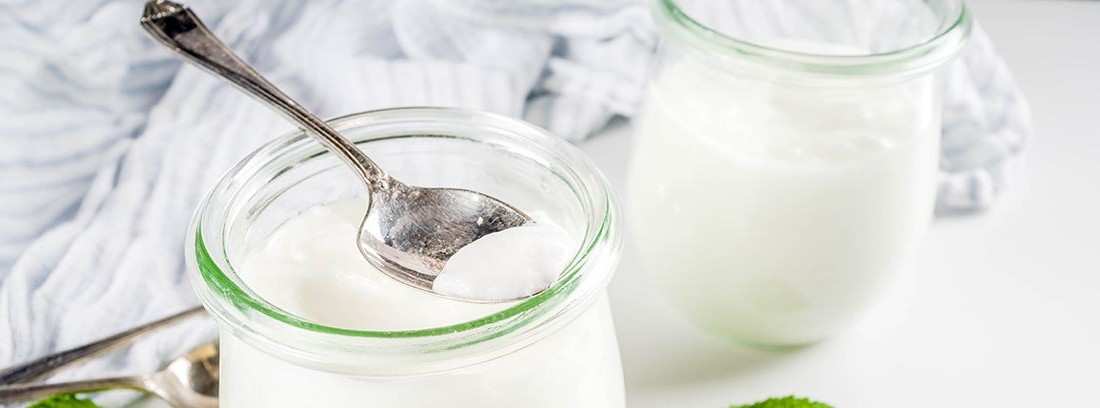Intestinal flora and children

The intestinal flora is an essential living company to maintain our health from birth. Until very recently it was thought that the intestine of the fetus was sterile, but there seems to be new evidence.
We are born with intestinal flora
The magazine has published an article that shows that the uterus is colonized by flora and that it is essential for the development of the fetus and the infant. This has been demonstrated thanks to study of the placentas of more than 300 mothers.
Until now it was thought that we were born with a sterile intestine (without flora) and that it only influenced the baby's flora the type of delivery (vaginal or caesarean section), the gestation age or the type of feeding (breastfeeding or artificial feeding) in the baby's flora. With this new discovery, the administration of antibiotics and probiotics during pregnancy They can alter the fecal microbiota of the newborn, which has been suggested to influence the development or not of certain pathologies, such as allergy.
The baby's flora undergoes another major change when it starts complementary feeding or when weaned. At that moment, a transitional flora begins to form until the flora is formed as the adult, around three years of life.
Factors that determine intestinal colonization
- The intrauterine flora: as we just commented. Studies are still needed on how the diet, drugs or habits of the pregnant mother influence the development of the baby in and out of the womb.
- Birth: and a vaginal delivery are, in terms of flora, totally different. During a vaginal delivery, maternal vaginal and fecal bacteria are transmitted and implanted from birth in the newborn's intestine. On the other hand, the colonization of the intestinal microbiota from cesarean birth is late onset, of little proportion and scarce diversity, compared to that born by vaginal birth.
- Gestational age: the difference in flora between a premature newborn and one to term is amply demonstrated. In the preterm baby, the flora is less diverse, with a low number of but high levels of potentially pathogenic bacteria.
- Nutrition: is one of the main colonization factors of the microbiota and favors the implantation of 85% of, and delays the implantation of Enterobacteriaceae. The early cessation of breastfeeding also influences the intestinal flora, promoting bacteria more typical of adults. All of this happens because certain types of bacteria live in breast milk. Once the baby stops nursing, other bacteria appear that are more common in adults, such as clostridia. However, bacteria like and still predominated in the intestinal flora of babies who have been breastfed.
- Conditions aenvironmental and lifestyle: it seems that the flora can change depending on the environmental conditions, poverty or social condition.
Effects of antibiotics on infant flora
of children can be affected by prolonged diarrhea, infections, inadequate nutrition or the use of antibiotics.
The antibiotics They are one of the most important advances in the history of medicine, but their irrational and unjustified use also has adverse effects.
These drugs not only kill the bacteria causing the infection, but also many of those that are simply vital for the body, such as bacteria in the intestinal flora.
Scientific studies have shown that taking antibiotics during the three years of life deteriorates, unbalances and impoverishes the intestinal flora in children, negatively altering its composition. Now you must study its possible relationship with the development of diseases such as allergies, type I diabetes, and autoimmune diseases.
How to promote good flora in children
These strategies are key to promoting a healthy and balanced flora:
- Balanced diet of the pregnant mother.
- Favor vaginal delivery whenever possible and breastfeeding.
- It is recommended to take foods with high content of live bacteria like: fermented dairy (yogurt or kefir), sauerkraut, or miso soup. Other foods, those that contain indigestible fibers, are prebiotics that help maintain flora such as: garlic, onion, carrot, leek, artichoke, endive, papaya, quince, apple and banana.
- The pediatrician, on occasion, may recommend taking it to achieve a faster and more effective recovery of the flora when it has been damaged by taking antibiotics or by prolonged diarrhea.
- The intestinal flora is made up of 100,000 microorganisms of 400 species mostly bacterial.
- The intestinal flora of children can be affected by prolonged diarrhea, infections, inadequate nutrition or the use of antibiotics.
- Eating foods high in live bacteria is recommended, such as: fermented dairy (yogurt or kefir), sauerkraut or miso soup.
(Updated at Apr 14 / 2024)